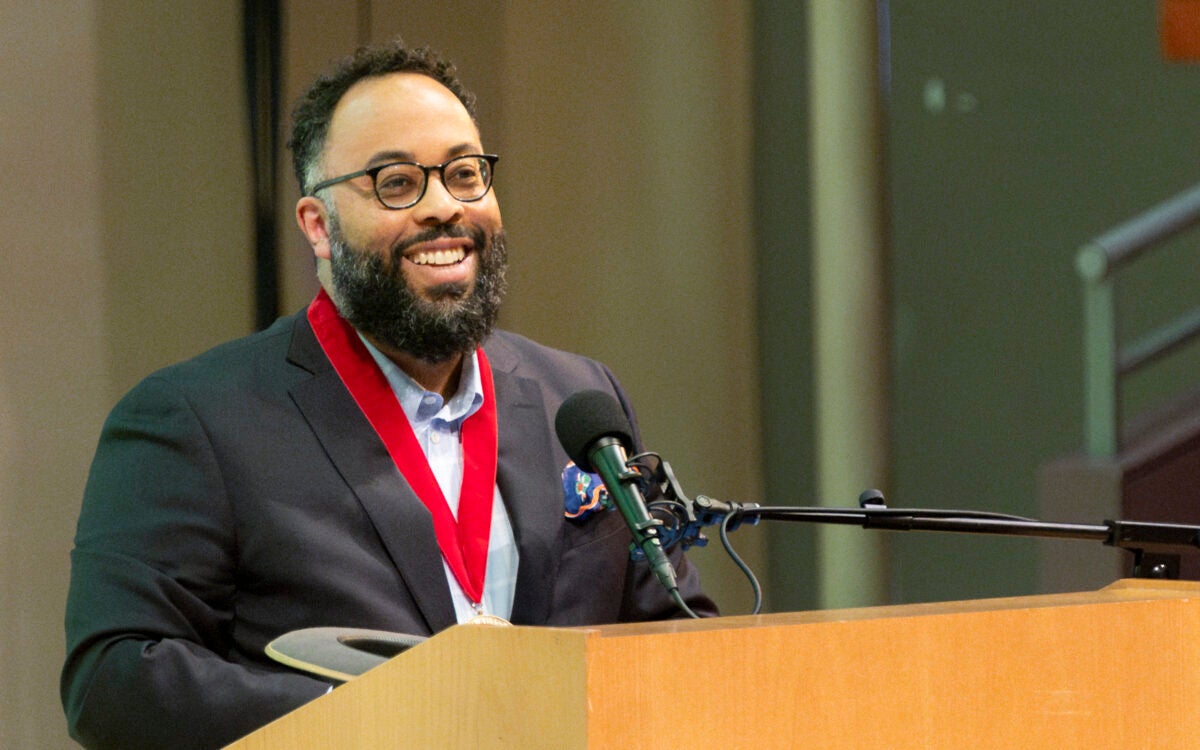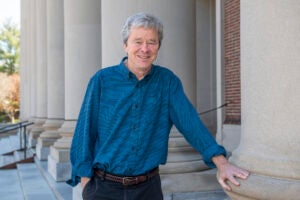Revitalizing Shanghai’s waterfront is challenging task
GSD’s Krieger and team find ingenious ways to modernize waterfront while preserving the past
How to integrate the old and new is a perpetual challenge for thoughtful architects and urban planners. Preserving a city’s sense of history while introducing elements of modernity and progress can be a daunting task.
But it is possible.
Take a look, for example at the Louvre Pyramid, the refashioned main entrance to Paris’ most famous museum. A contemporary glass structure by architect I.M. Pei, the pyramid is at once a nod to the ancient past and to modernity, combining the grandeur of the reign of Louis the XVI with a streamlined, 20th-century design. It is, for many, an architectural fusion success story.
A similar challenge was recently taken on by Alex Krieger, M.C.P.U.D. ’77, professor in practice in the Department of Urban Planning and Design at Harvard’s Graduate School of Design (GSD), whose firm Chan Krieger Sieniewicz — led by three GSD graduates and staffed by a number of GSD alumni — was chosen last November to redevelop a 1.8 kilometer stretch of waterfront in Shanghai, China. The popular walkway, known as the Bund, will be updated and reworked to include more green and open space and better connections to a long, raised promenade that sits atop a dike at the water’s edge. In addition, the redesign will offer better views of the waterway and enhanced physical and visual connections to old and new parts of the venerable city.
Krieger, who teaches the GSD Urban Design Proseminar as well as design studios such as last spring’s “Reconnecting City & River: Vienna, Austria & the Danube,” also leads a class in the College’s Core curriculum on the design of the American city. Over the years, Krieger’s firm has become known for its waterfront development work, having completed revitalization efforts on waterfronts from Boston to Washington, D.C., to Louisville, Ky., to Cincinnati, Ohio, and is currently working on the Mississippi Riverfront in New Orleans. Krieger’s firm also provided the earliest designs for the Rose Kennedy Greenway, the surface area uncovered by Boston’s Big Dig that is being developed into a series of connecting parks and open spaces.
Contemporary cities are transforming radically, said Krieger, becoming more competitive with one another and moving away from the notion of a “19th century cauldron of industrialization” towards a focus on quality of life, tourism, and international economics and new technologies.
The stretch along Shanghai’s Huangpu River was a major trading port during the 19th century that later developed into an important East Asian financial hub. Extensive foreign investment from France, England, and the United States led to the creation of a row of grand, Western-style buildings along the embankment, mostly trading or banking houses that reflect a myriad of architectural designs, from baroque to art deco. The riverfront stretch is one of Shanghai’s most popular tourist attractions and looks directly onto the Pudong, the city’s new thriving, ultramodern financial heart, which includes several of the world’s tallest buildings, including the Shanghai World Financial Center.
The redevelopment of the Bund will complement work already in progress by city planners to put underground eight lanes of traffic that currently run along the busy street.
With the extra space, Krieger’s team plans to open the area, making it more pedestrian-friendly by adding green space and creating more of a linear-type park layout.
In addition, the plans include the restoration of a Chinese garden located next to an existing war memorial at one end of the promenade, and the creation of a new tower at the promenade’s other end that would act as an entrance to the part of the city known as Old Shanghai. Krieger’s plans also call for the addition of a floating barge adjacent to the promenade that will bring people into even closer contact with the water.
Though the goal was to have the work completed by 2010 to coincide with the city’s World Expo, Krieger said it was unclear whether city officials currently plan to adhere to that extremely ambitious time-frame.
For the architect, the work on the Bund represents a chance not only to expand public park and open space — largely nonexistent in traditional China — but also an opportunity to explore and enhance the value inherent in older neighborhoods. Additionally, he said, the project enables his firm to play a part in a kind of major new millennium makeover.
“Shanghai will be to the 21st century what New York was to the 20th century,” said Krieger. “It’s really emerging as one of the most important urban concentrations in the world — as a financial center, as a business center, as a cultural center. So, to be able to participate in the transformation of one of its most important historic sections is certainly a great challenge and a desirable role to play.”
colleen_walsh@harvard.edu




